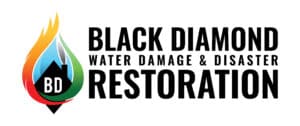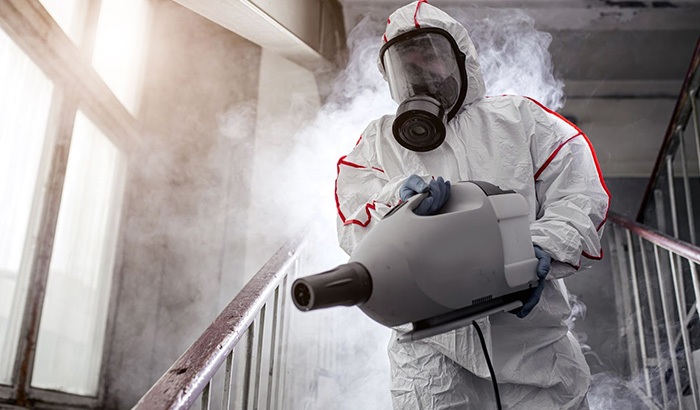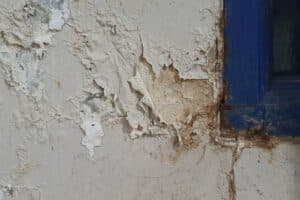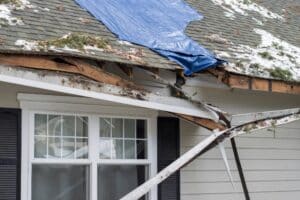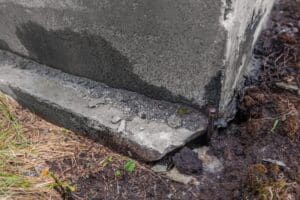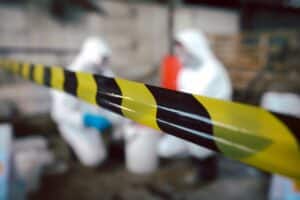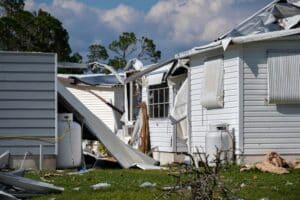Amidst the hustle of homeownership, don’t overlook the critical role of biohazard cleanup and total restoration in safeguarding your living space.
Biohazards come in various forms, from human and animal waste to mold, body fluids, medical waste, and hazardous chemicals. Addressing these hazards promptly is imperative to prevent the spread of diseases and maintain a safe environment for you and your loved ones.
When faced with hazardous chemicals on your property, swift action is crucial, and only a professional biohazard cleanup service will deliver the peace of mind you need.
Follow along as we share the step-by-step process for cleaning biohazard materials and everything else you need to know to keep your household safe.
Understanding biohazards
Biohazards encompass any biological substance that’s harmful to human or animal health. While blood is the most common biohazard we encounter, other examples include mold spores, human waste, animal infestations, and industrial chemicals. Biohazards unexpectedly infiltrate our living and working spaces from a tiny leak fostering black mold growth to a rodent infestation leaving behind harmful droppings.
Moreover, hotels, nightclubs, and assisted living facilities are also susceptible to biohazardous materials like body fluids and sharps waste. Additionally, crime scenes, traumatic accidents, medical incidents, and other events may necessitate biohazard cleaning for property owners or management to address promptly.
Different levels of biohazards
The CDC categorizes biohazards based on their danger and potential harm:
- Biosafety Level 1 (BSL-1): Low-risk biohazards, such as non-pathogenic bacterial or viral strains, are considered at this level.
- Biosafety Level 2 (BSL-2): Moderate-risk biohazards causing mild to severe illnesses fall under this category.
- Biosafety Level 3 (BSL-3): Severe infections, like tuberculosis bacteria, are handled with extreme caution at this level.
- Biosafety Level 4 (BSL-4): This level manages the most hazardous, often lethal infections with no known cures or vaccines.
Understanding these levels helps professionals gauge the appropriate response and protective measures needed for each unique situation.
Common reasons for biohazard cleaning
The demand for cleaning biohazard materials often arises unexpectedly. Here are some common scenarios where you might need professional cleanup and total restoration services.
Sewer backups
Sewage backups result from various issues, such as broken pipes, toilet leaks, or sewer corrosion, and pose significant health risks if not promptly addressed. Tree root intrusion is another common cause, where tree roots penetrate sewer lines in their search for water and nutrients. Additionally, excessive grease, fat, or oil buildup in pipes leads to clogs and prevents proper wastewater flow.
Immediate sewage cleanup is crucial to minimize exposure to dangerous diseases like E. coli and salmonella. Direct or indirect contact with sewage-contaminated water may result in severe health issues like gastroenteritis, diarrhea, vomiting, hepatitis, and cholera. Plus, inhaling sewage fumes leads to vicious respiratory problems.
Sewage damage cleanup requires specialized knowledge, training, and equipment. When you hand over the reins to seasoned professionals, you can relax knowing that your property is in capable hands.
Crime scenes
Crime scenes are often fraught with biohazards, from blood and bodily fluids to potential chemical contaminants. Trained specialists step in to tackle the aftermath as they employ meticulous cleaning and disinfection procedures. Their expertise ensures the removal of biohazards, whether it’s the aftermath of a violent crime or an accident scene.
Like sewage backups, immediate action is crucial to mitigate health risks associated with biohazard exposure. Direct or indirect contact with blood and bodily fluids often leads to severe health issues, including infections and diseases. Plus, the emotional toll of encountering such scenes is very overwhelming.
Crime scene cleanup requires specialized knowledge, training, and equipment. By entrusting this task to experienced professionals, homeowners will feel confident that their property is in good hands. Then, they can center their focus on moving forward from the trauma.
Mold growth
Mold is a silent intruder, easily creeping into damp, poorly ventilated spaces. Mold poses significant health risks over time. Its presence commonly triggers respiratory issues, allergic reactions, and other ailments. Thorough cleanup and restoration are essential to combat mold infestations effectively.
Effective mold remediation requires a comprehensive approach. Professionals remove visible mold and address underlying moisture issues to prevent its recurrence. They utilize advanced techniques such as HEPA vacuuming, antimicrobial treatments, and specialized drying equipment to guarantee thorough cleanup and restoration.
By entrusting mold cleanup to experienced professionals, homeowners will mitigate health risks and protect the structural integrity of their property. Professional mold remediation restores indoor air quality and provides peace of mind, knowing the home is a safe and clean environment.
Unattended deaths
When a death goes unnoticed for an extended period, the aftermath is particularly cumbersome. Professional bioremediation becomes essential to safely clean and restore affected areas.
As the body decomposes, it releases bodily fluids and gases that spread pathogens and foul odors throughout the space. This creates hazardous conditions and poses emotional and psychological challenges for those involved.
Specialized cleaning techniques are required to address the unique challenges posed by unattended deaths. Professionals undergo extensive training to handle biohazardous materials with care and compassion. They utilize advanced cleaning agents to thoroughly remove biological contaminants and restore the space to a safe and habitable condition.
By entrusting the cleanup to experienced professionals, property owners find comfort in knowing that their home will be restored with sensitivity and expertise
Hoarding
Did you know that approximately two to six percent of the population struggles with hoarding disorder? Accumulated clutter and debris not only attract pests and mold but also create tripping hazards and obstruct crucial ventilation systems. This commonly leads to respiratory issues, allergic reactions, and increased fire hazards.
Compassionate and thorough cleanup is essential to effectively addressing hoarding situations. Experts approach these cases with empathy and understanding. They recognize the emotional challenges faced by individuals struggling with hoarding disorder.
They work diligently to remove clutter, sanitize affected areas, and restore the living environment to a safe and habitable condition. By entrusting the cleanup to experienced professionals, those affected by hoarding disorder find relief knowing that their home will be restored with care and compassion.
Identifying the biohazard
Spotting biohazards is key to keeping everyone safe and sound. Gloves, goggles, and the whole nine yards are essential for suitable protection while cleaning biohazards. Proper containment and disposal of biohazard materials are critical parts of cleanup.
Here are five key steps of the biohazard cleanup process:
1. Dress the part — Safety comes first, with no exceptions. Before you begin cleaning, ensure you have all your safety gear ready, including gloves, goggles, and suits. Safety gear serves more than simply aesthetic purposes; it also protects you from dangerous toxins.
To protect your skin from exposure, wear long sleeves and pants. Don attire that covers your entire body, including pants, a shirt, and closed-toed shoes. Ensure that everyone follows CDC standards and uses the finest PPE available.
2. Control the scene — Containment is key. The next move is to isolate the contaminated area. Biohazards spread like wildfire, so locking down the scene is a top priority. This includes specific techniques to seal off and confine the biohazard site tight.
3. Disposing of the biohazard material — The next stage for a biohazard cleaner is to confine and dispose of dangerous items. Containment means shutting down the area or crime scene tightly, ensuring nothing hazardous escapes and spreads.
Hazmat suits or respirators might be necessary for staff, depending on the substance. Proper disposal is a must — always follow all local, state, and federal guidelines.
4. Decontamination — This step is crucial for removing any lingering contamination and preventing further spread. It’s all about thoroughly cleaning and disinfecting every surface, piece of equipment, and material touched by the biohazardous substance. No corners are cut here — specialized training, equipment, and materials are non-negotiable.
5. Verification — Last but not least, verification. Make sure the cleanup is top-notch and that the area is squeaky clean and safe. Professional biohazard specialists use tools like the adenosine triphosphate (ATP) test to certify that the scene meets the mark for decontamination. Once it passes, it’s back to business as usual, knowing everything’s safe for use.
Choosing a biohazard restoration company
Selecting a biohazard cleanup service is a weighty decision that demands careful consideration. You need a company equipped with the knowledge, experience, and tools to handle the task safely and effectively. Here’s what to look for when selecting the right team:
Certification counts
Choose a business that has trained and certified its staff in biohazard cleanup. This guarantees that they have the essential skills and expertise to carry out the job with confidence.
Proper equipment
Choose a business that has the required equipment to complete the cleanup. From protective gear to specialized cleaning tools, having the right resources is non-negotiable.
Experience speaks volumes — Seek out a company with a proven track record in biohazard cleanup. Check references and online reviews to gauge their reputation and reliability to deliver a safe and clean environment.
Why choose a biohazard restoration company?
When dealing with hazardous materials, it’s imperative to engage professionals for cleanup and total restoration. Here’s why:
Proven expertise
Biohazard cleaning professionals have expertise and training in handling hazardous items, including blood, body fluids, chemicals, and infectious agents. Their expertise guarantees that biohazardous items are properly controlled, cleaned, and disposed of in accordance with tight standards and industry best practices.
Disease prevention
Biohazardous materials often transmit infectious diseases such as HIV, hepatitis, and MRSA. Professional cleaners employ specific disinfectants and adhere to strict cleaning protocols to eradicate microorganisms, safeguard the health of occupants, and guarantee disease prevention.
Regulatory compliance
Biohazard cleanup must adhere to stringent standards set by state and federal agencies. Professionals stay updated on these regulations to ensure compliance at every stage of the cleaning process. This minimizes their risk of legal penalties and liabilities.
For example, the Occupational Safety and Health Administration (OSHA) Bloodborne Pathogens Standard, sets guidelines for protecting workers from occupational exposure to bloodborne pathogens.
Proper disposal
Proper handling and disposal of biohazardous waste are crucial to prevent contamination and environmental harm. Professionals are well-versed in waste management standards and follow guidelines for transportation, processing, and disposal in accordance with local laws.
Confidentiality
Confidentiality is paramount in biohazard cleanup, particularly in sensitive environments where privacy is crucial. Professional cleaners recognize the significance of discretion and certify that sensitive information remains safeguarded throughout the cleaning process.
By entrusting biohazard cleanup to specialists, rest assured that the affected area will undergo thorough cleaning, decontamination, and restoration, significantly reducing potential liabilities and providing peace of mind.
Ready to restore safety? Contact Black Diamond Restoration today
Biohazard cleanup and total restoration isn’t for the faint-hearted; it demands specialized knowledge, top-notch training, and the right equipment. But fear not! When you hand over the reins to seasoned professionals, you’ll have the peace of mind that your property is in capable hands. This is where Black Diamond Restoration comes in.
With our expertise and attention to detail, our team will whip your space back into shape safely and effectively, sparing you the stress and hassle. So go ahead, leave the dirty work to the pros, and get ready to breathe easy in your freshly restored home.
We are based in Murray, Utah, and we proudly service Salt Lake City and the surrounding areas. Our skilled and trained personnel are experienced in cleaning biohazard materials and will guide you through the restoration procedures with reassurance. We’re here to restore a safe and clean environment so you can enjoy your home again.
If biohazard cleanup is on your mind, please contact Black Diamond Restoration today. We’ll have your house back to its pre-damaged state in no time. With over twenty years of disaster restoration experience, we do it all and do it correctly!
